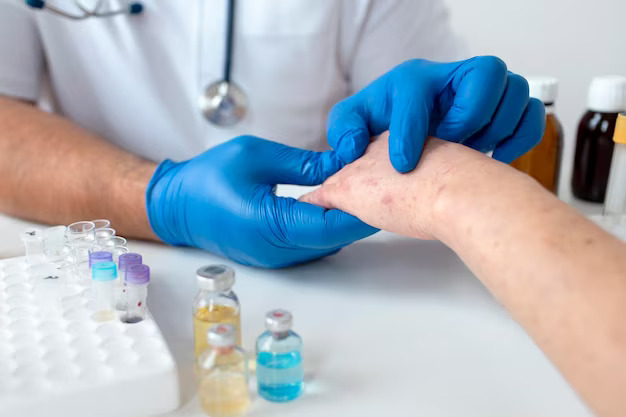Cutaneous Horn Removal
A Cutaneous Horn is a type of skin lesion or growth that manifests on the skin surface. Comprised of keratin, a protein found in the outer skin layer, this growth may resemble a cone or horn and can vary in size. The name is derived from the occasional resemblance to an animal’s horn. Predominantly affecting older adults, both men and women may experience this skin condition. While many cutaneous horns are benign or noncancerous, it’s essential to note that some can be precancerous or cancerous.

Symptoms
A cutaneous horn presents as an elevation on the skin’s surface, constituting the most common symptom. This growth can take the form of a large bump, cone, spike, or horn. It may share the same color as the surrounding skin or exhibit a different hue, with variations such as white, purple, yellow, tan, or brown. The curvature of most cutaneous horns is typically pronounced and may intensify as they enlarge.
These growths can manifest on any part of the body, but they are commonly observed on areas that are more exposed to sunlight. Predominantly, cutaneous horns appear on the face, hands, ears, head, palms, and chest. Regions of the body that receive increased sun exposure are more prone to the development of these growths.
When to access Medical Care
Consulting a dermatologist is advisable in the presence of the following issues related to a cutaneous horn:
- The emergence of a new cutaneous horn.
- Experience of pain and inflammation in the region of the cutaneous horn or its surroundings.
- Noticeable redness or bleeding associated with the cutaneous horn.
- Rapid growth of the cutaneous horn.
- Hardening or thickening of the skin at the base of the cutaneous horn.
Determinants of risk
Actinic keratoses can develop in anyone, but certain factors may elevate your risk, such as:
- Having red or blond hair and blue or light-colored eyes.
- A history of extensive sun exposure or frequent sunburn.
- Tendency to freckle or burn easily when exposed to sunlight.
- Being older than 40.
- Residing in a sunny location.
- Working outdoors.
- Having a weakened immune system.
Preventive measures for actinic keratoses are not well-defined, but reducing sun exposure and using high SPF sunscreen may help lower your risk.
Recovery process
Recovery duration varies, contingent on factors like patient characteristics, chosen procedure, and the extent of severity.
Why entrust your care to us?
At Steps 2 Cure, our foundation of trust is built upon several key pillars that ensure your confidence in our services and expertise. Our team comprises highly qualified professionals with extensive experience in their respective fields. Their knowledge and skills enable us to offer you the best possible care and solutions for your medical needs. We understand that each individual is unique, and so are their healthcare requirements.
That’s why we prioritize tailoring our treatments and approaches to your specific circumstances, ensuring that you receive care that is truly designed for you. You are at the heart of everything we do. Your comfort, concerns, and aspirations guide our efforts. Our compassionate approach ensures that you feel valued and supported throughout your healthcare experience.
To commence the treatment procedure, you can start by forwarding your questions via WhatsApp at (+91 9999652964) or by sending an email to care@steps2cure.com. Our team will ensure a swift response to your queries.
Still have a Query?
Your health and peace of mind matter to us, and we’re dedicated to addressing any inquiries you may have with care and expertise. Feel free to reach out.
Subscribe To Our Newsletter
Stay in touch with us to get latest news and special offers.

